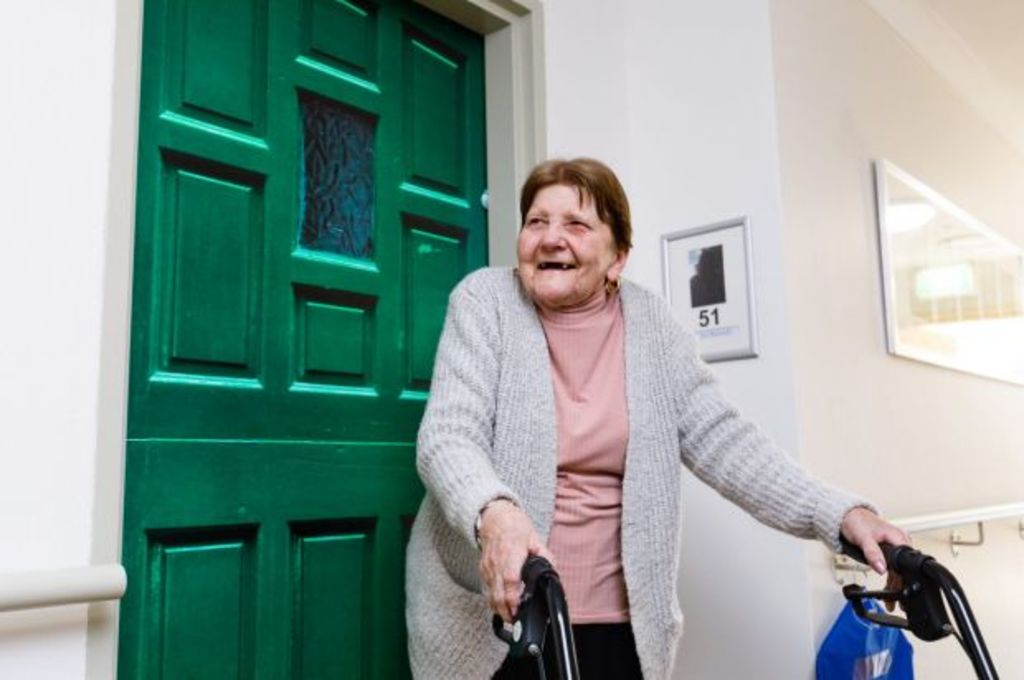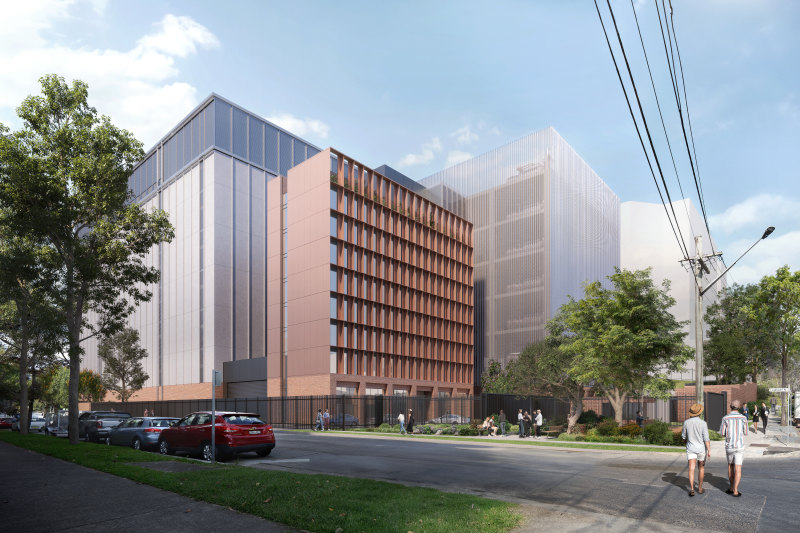Aged care home in Western Sydney unveils personalised doors for dementia residents

Walking the corridors of the Emmaus Village aged care home in Western Sydney, Doreen Brazewell is thousands of kilometres away from her old house in England.
But now a simple yet ingenious initiative to change the doors of the facility has helped to make the 90-year-old feel at home.
“The door reminds me of the terrace houses I had in England. It’s just like [the doors] when I was younger,” Ms Brazewell said.
The newly minted green door uses a custom-made stick-on decal, which allows Ms Brazewell to easily identify her room. It has replaced the bland, cream door that was found throughout the corridors of the facility in Kemps Creek, which often left residents with dementia confused and wandering into the wrong room. But not any more.
The aged care home is the first in Sydney to personalise its doors with decals for residents to jog their memories.
Residential care manager Kate Todd said in the three weeks since the doors had been installed, she has seen a dramatic change in resident behaviour.
“It stops intrusive behaviour, they’re not going into other residents’ rooms because they know which door is theirs now,” Ms Todd said.
While the village accommodates 64 people, there are 12 rooms specifically for people with dementia and the doors to those rooms have received the special treatment.
Ms Todd said before the revamp, the corridors looked clinical to the residents, who found themselves easily confused. She said the new initiative was more person-centred and felt like home for the residents.
The personalised doors were inspired by Dutch project True Doors, which recreated doors of residents’ original homes using stick-on designs.
The doors in Kemps Creek were modelled as closely to residents’ original doors as possible in a bid to trigger a memory of their favourite home.
Of the 12 doors installed, Ms Todd estimated half directly benefited the residents while the residents in the other six rooms, who have more advanced dementia, had experienced some visible form of happiness.
It was a simple yet effective fix that could be replicated elsewhere, according to Dr Tanya Petrovich, business innovation manager at the Centre for Dementia Learning at Dementia Australia.
“It gives you that sense of home and familiarity … it conjures up the feelings and memories and it’s very powerful,” Dr Petrovich said.
With an estimated 250 people diagnosed with dementia every day, it has become the second leading cause of death in Australia.
An estimated 425,000 Australians are living with dementia and that’s expected to rise to more than half a million by 2025 and more than million by 2056, unless there is a medical breakthrough.
This sheer increase has caused more people and institutions to think about ways of assisting people with dementia.
“It’s only in the last 10 years that people have taken note and only in the last two years [that] institutions are building [dementia-friendly ideas] in their designs,” Dr Petrovich said.
“If you want to be able to support yourself longer you can create an environment that you can read and supports you.”
The personalised doors assist with residents finding their room because for each one, “it triggers a memory” and they will think “it gives me familiarity, it’s the door of my home therefore it’s easier to recall where my bedroom is,” she said.
This “way-finding” or “enabling” design, which helps people who suffer from memory loss, has also been rolled out in other parts of the country including in the NSW’s Illawarra and Victoria in recent years.
We recommend
We thought you might like
States
Capital Cities
Capital Cities - Rentals
Popular Areas
Allhomes
More







